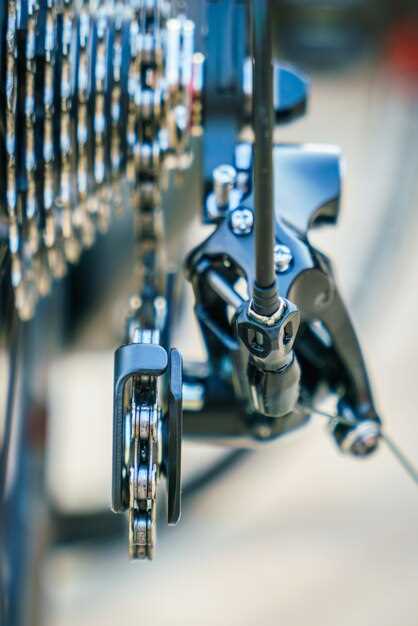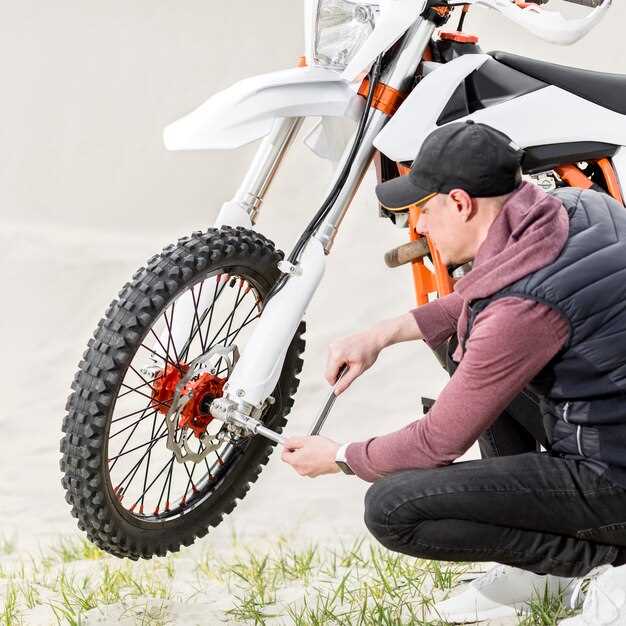
When it comes to competitive racing, every component of a motorcycle plays a crucial role in performance and safety. Among these components, the master cylinder is pivotal for effective braking. As riders push their machines to the limit, the need for precision braking becomes ever more critical. Upgrading the master cylinder can significantly enhance braking performance, offering better modulation and response under extreme conditions.
The stock master cylinder that comes with most race motorcycles is designed for general use, making it less suitable for the rigorous demands of racing. By investing in a high-performance master cylinder, riders can experience improved lever feel and increased stopping power. These upgrades not only optimize the hydraulic system but also contribute to rider confidence, allowing for more aggressive braking in tight corners and at high speeds.
Ultimately, selecting the right master cylinder upgrade involves considering various factors such as bore size, material construction, and compatibility with brake calipers. Advanced materials and engineering techniques have led to the development of lightweight and durable options, which not only improve performance but also reduce unsprung weight–a crucial aspect of motorcycle dynamics. Effective upgrades can transform a standard racing machine into a finely-tuned instrument ready for the track.
Choosing the Right Master Cylinder for Performance Enhancement
Selecting the appropriate master cylinder is crucial for optimizing the braking performance of race motorcycles. The first consideration should be the size of the master cylinder bore. A larger bore increases fluid displacement, providing a firmer brake feel and quicker response. However, this can also require more force at the lever, which may not be suitable for all riders. On the other hand, a smaller bore reduces lever effort but may lead to a spongy brake feel if not paired with compatible calipers.
Next, consider the master cylinder’s compatibility with your existing braking system. Ensuring that the master cylinder works seamlessly with calipers and brake lines is vital for achieving the desired performance. Upgrading to a radial master cylinder can significantly enhance braking reaction time, as these designs help reduce the flex typically found in traditional axial systems.
Material choice is also significant. Aluminum master cylinders, for instance, are lightweight and corrosion-resistant, making them ideal for racing conditions. In contrast, magnesium options offer even lower weight but might be more fragile and less resilient under extreme conditions.
Brake lever ergonomics should not be overlooked. Adjustable levers allow customization of lever position and reach, accommodating different rider preferences and improving control. Riders should test different lever lengths and shapes to find the optimal configuration for their style and grip.
Finally, consider the hydraulic ratio of the master cylinder. This ratio impacts how the lever translates into brake caliper movement. A properly matched hydraulic ratio enhances modulation and control, which is especially important when cornering or managing speed in high-stakes racing scenarios. Balancing all these factors will lead to a more effective braking system, enhancing overall motorcycle performance and rider confidence on the track.
Installation Tips for Optimal Brake Lever Feel and Response

Achieving the best brake lever feel and response is crucial for race motorcycles. Proper installation techniques can significantly enhance performance and rider confidence. Here are essential tips to ensure optimal results.
1. Choose the Right Master Cylinder: Ensure you’re using a master cylinder compatible with your motorcycle’s braking system and designed for racing. Consider factors such as piston size and overall design, as these can impact brake pressure and lever pull.
2. Use Quality Brake Fluid: Select high-performance brake fluid with a high boiling point to minimize fading under extreme conditions. Make sure to bleed the braking system thoroughly to remove any air bubbles, which can compromise lever feel.
3. Positioning: Install the master cylinder in a position that allows for a natural grip of the lever. The angle should facilitate easy reach without straining your fingers. Experiment with different positions to find the most comfortable setup.
4. Adjust Lever Ratios: Many race-oriented master cylinders allow for lever ratio adjustments. A higher ratio can provide more braking power with less effort but may require more travel. Experiment within the manufacturer’s guidelines to find the right balance for your riding style.
5. Check Hose Routing: Ensure that brake lines have a clean and direct routing without sharp bends or kinks that could restrict fluid flow. This helps maintain consistent pressure and improves lever feel.
6. Secure All Connections: Tighten all fittings and connections to prevent fluid leaks, which can lead to a soft lever feel. Regularly inspect for wear and damage to hoses and fittings to ensure reliability.
7. Test and Adjust: After installation, test the brakes at low speed to assess lever feel. Make incremental adjustments as needed to lever positioning and ratio, tailoring it to your preferences for responsiveness and comfort.
8. Regular Maintenance: Continually maintain the braking system by regularly checking fluid levels, inspecting hoses, and replacing worn components. This ensures sustained performance and responsiveness during races.
Maintaining and Troubleshooting Upgraded Master Cylinders

Regular maintenance of upgraded master cylinders is crucial to ensure peak performance and reliability during races. Proper care involves routine inspections, fluid checks, and timely replacement of worn components. Always start by routinely checking the fluid level and condition; use only the recommended brake fluid type to avoid damage to seals and internal parts.
Inspecting Seals and Gaskets: Over time, seals and gaskets can degrade due to heat and pressure. Look for signs of leakage around the master cylinder. If you notice any fluid seeping, it may indicate a need for replacement. Make sure to use high-quality seals that match the specifications of your upgraded system.
Bleeding the Brake System: After upgrading your master cylinder, bleeding the brake lines becomes essential to eliminate any air pockets that may hinder braking performance. Follow a systematic bleeding procedure, ensuring that you get a firm lever feel. Regular bleeding can also be beneficial, particularly if you experience sponginess in the brake lever.
Troubleshooting Common Issues: If you encounter diminished braking performance, start by checking for air in the system, as this is a common issue after installation. If the problem persists, inspect the master cylinder for proper adjustment and alignment. Ensure that the lever and piston movements are smooth and free of obstruction.
Performance Monitoring: After any maintenance or adjustment, test the braking system under controlled conditions. Look for responsiveness and consistency. Document any changes in performance to aid future troubleshooting and track the lifespan of components.
Replacement Schedule: Upgrade your maintenance routine based on usage. Race environments place added stress on components; thus, consider replacing internal parts regularly, based on the manufacturer’s guidelines. Staying ahead of wear can prevent catastrophic failures during crucial moments on the track.
By adhering to these maintenance and troubleshooting practices, racers can significantly extend the life of their upgraded master cylinders while ensuring safe and effective braking performance on the track.

